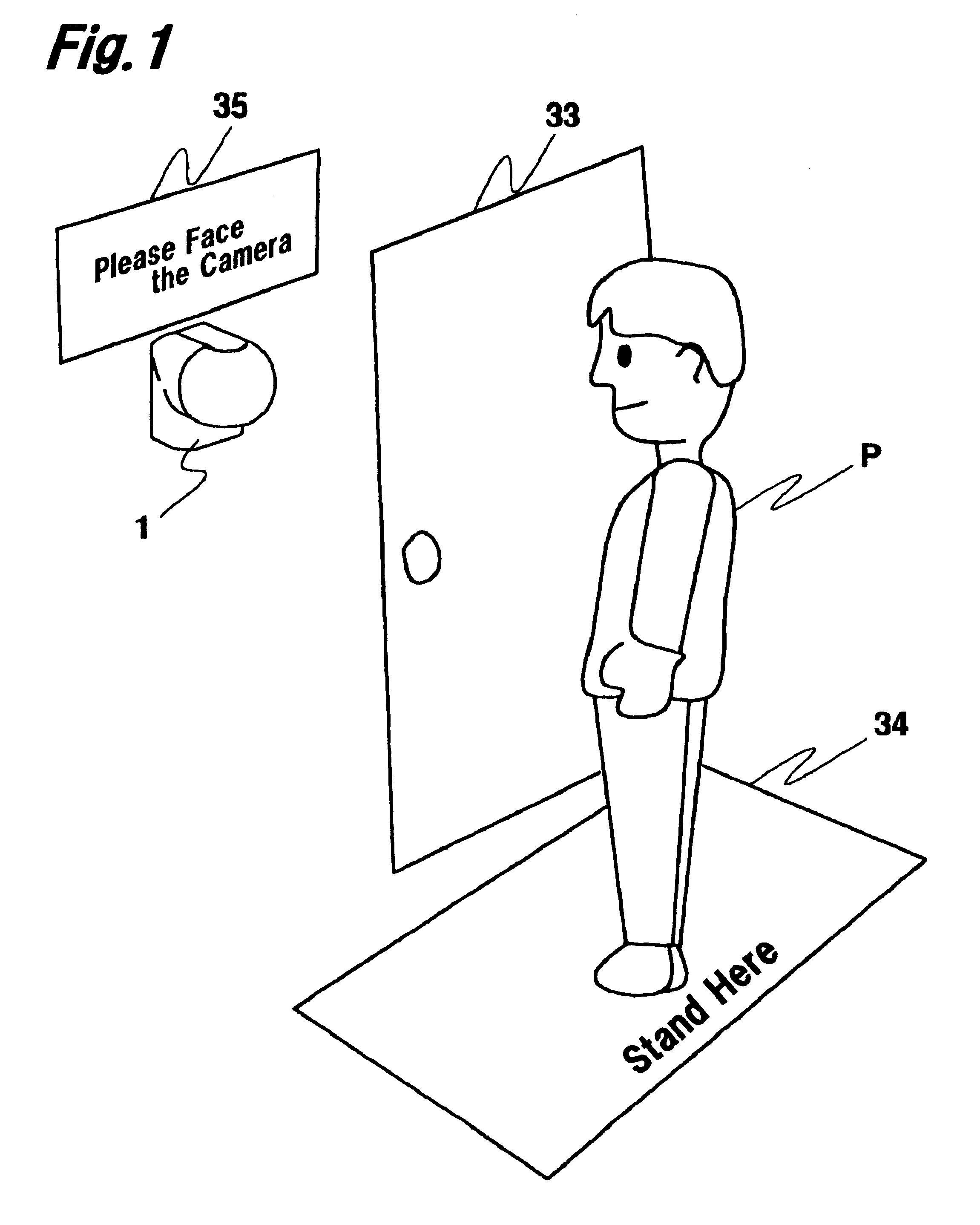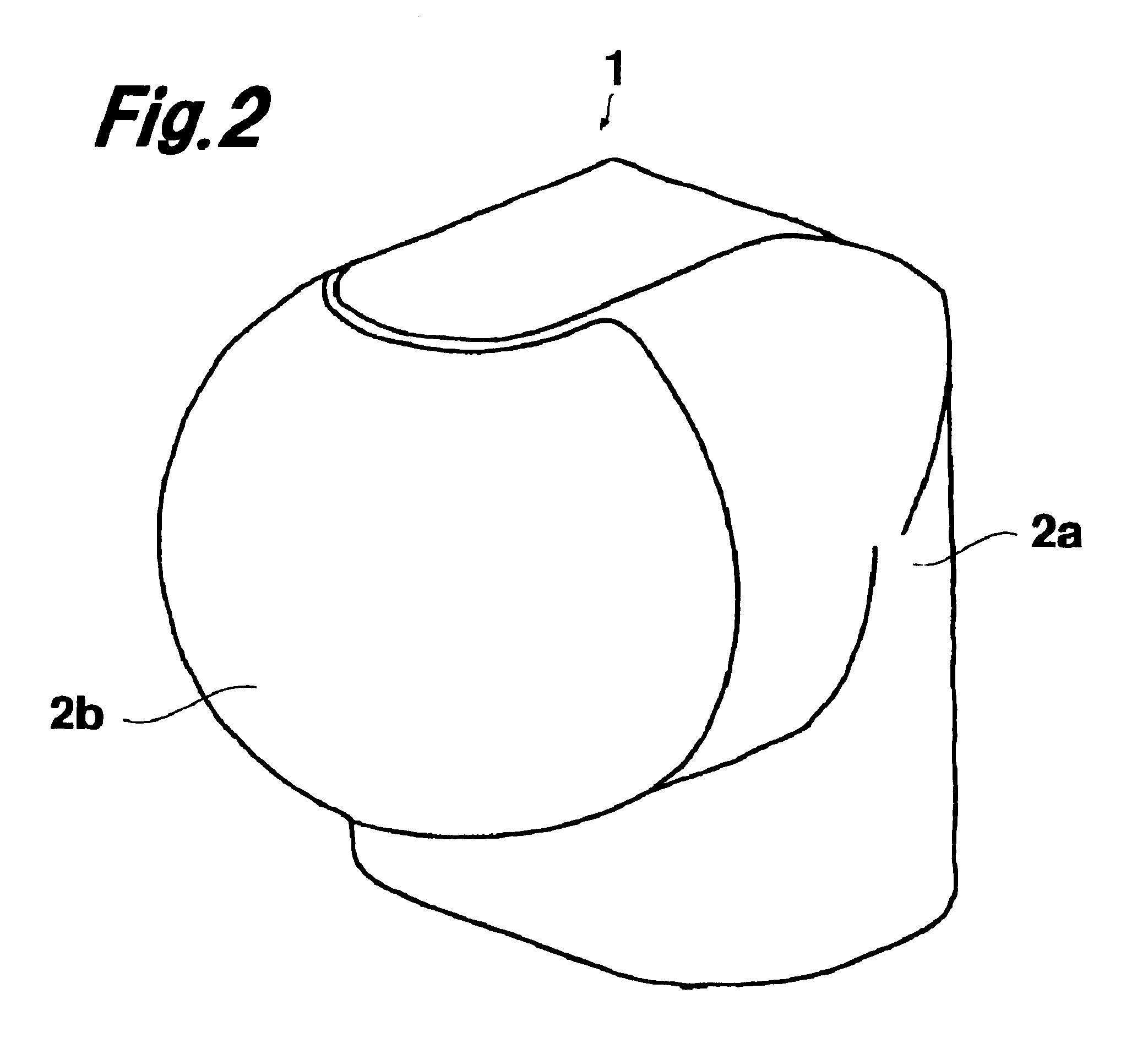According to the above, a still subject has its ranging direction changed by a direction changing means and is identified from changes in the ranging information by the ranging means, and the photographing direction of the photographing means is turned toward the subject by the direction changing means and the subject is photographed, so it is possible to obtain an image of a still subject while also having the subject framed in the obtained image, and because image processing such as cutting out images for framing is not necessary, it is possible to make the system higher speed and lower cost.
With camera 1 of this embodiment, the ranging direction D of the ranging unit (light emitting element 5 and light receiving element 6) that is capable of ranging in one direction by pan motor 13 and tilt motor 12 is changed (steps 108 to 116), and still person P is identified by changes in signals from the ranging unit by control circuit 20 (steps 118 to 122). Then, the photographing direction D of photographic lens 3 is turned by tilt motor 12 toward face center P.sub.E of the identified person P, face center P.sub.E of person P is framed in the center of angle of view V.sub.A (steps 124 to 138), and the face of person P is photographed by imaging element 4. Therefore, with camera 1 of this embodiment, it is possible to obtain an image of the face of still person P, so at the host unit, since it is not necessary to do trimming processing of cutting the face part of person P from the background, etc. as was required with the prior art, it is possible to shorten the image processing time and at the same time, to use a low pixel count, low cost camera because the high resolution conversion of imaging element 4 that occurs with trimming processing is not necessary. In other words, by using camera 1 of this embodiment, there is no need for trimming processing which focuses on the face of person P after fetching the image, and it is possible to obtain a post trimming process image at the point the image is fetched, so it is possible to shorten the processing time at the host unit and to lower the cost of the camera.
Also, almost all photographic subjects (persons P) are in the position closest to camera 1, so with this embodiment, even when there are multiple subjects including persons P and P', by photographing the face of person P who is the subject closest to camera 1 using imaging element 4, identification of the subject is simplified. Therefore, with this embodiment, we showed an example of operating micon 21 using software (a program), but it is also possible to form the control circuit using hardware that includes a comparator, etc. without using micon 21 or software, so it is possible to make the device lower in cost and smaller in size.
Furthermore, with camera 1 of this embodiment, an active method triangular ranging [device] is used. Because of this, by making light emitting element 5 emit light in the infrared range, it is possible to identify a subject such as a person P even in a dark place. Also, after identifying the center of the face of person P once, camera 1 of this embodiment makes infrared LED 14 emit light (step 140), and photographs the face of person P using imaging element 4, so there is no surprising the subject person P or damaging the vision of person P. Furthermore, with camera 1 of this embodiment, the structure is such that there is no IR cut filter in photographic lens 3, so imaging element 4 can photograph even in the infrared range. Specifically, a camera 1 for verification such as the one of this embodiment is typically placed in a relatively dark place such as a corridor or entryway, so the infrared range active method is used, light is projected on the subject by infrared LED 14, and by further using photographic lens 3 from which the IR cut filter has been removed, it is possible to exhibit the original functions of a verification camera which can take photographs even in dark places.
Even further, with camera 1 of this embodiment, a light emitting element 5 with a light spot diameter of about 3 mm was used. When the light spot diameter is too large, there are cases when it is difficult to distinguish the output from light receiving element 6, so that the outline, etc. of person P is unfocused. With camera 1 of this embodiment, we used a small diameter for which poor focus problems do not occur for the light spot of light emitting element 5, so it is possible to get an accurate grasp of the signal changes, and to frame the face of person P without error for photographing.
 Login to View More
Login to View More  Login to View More
Login to View More 


